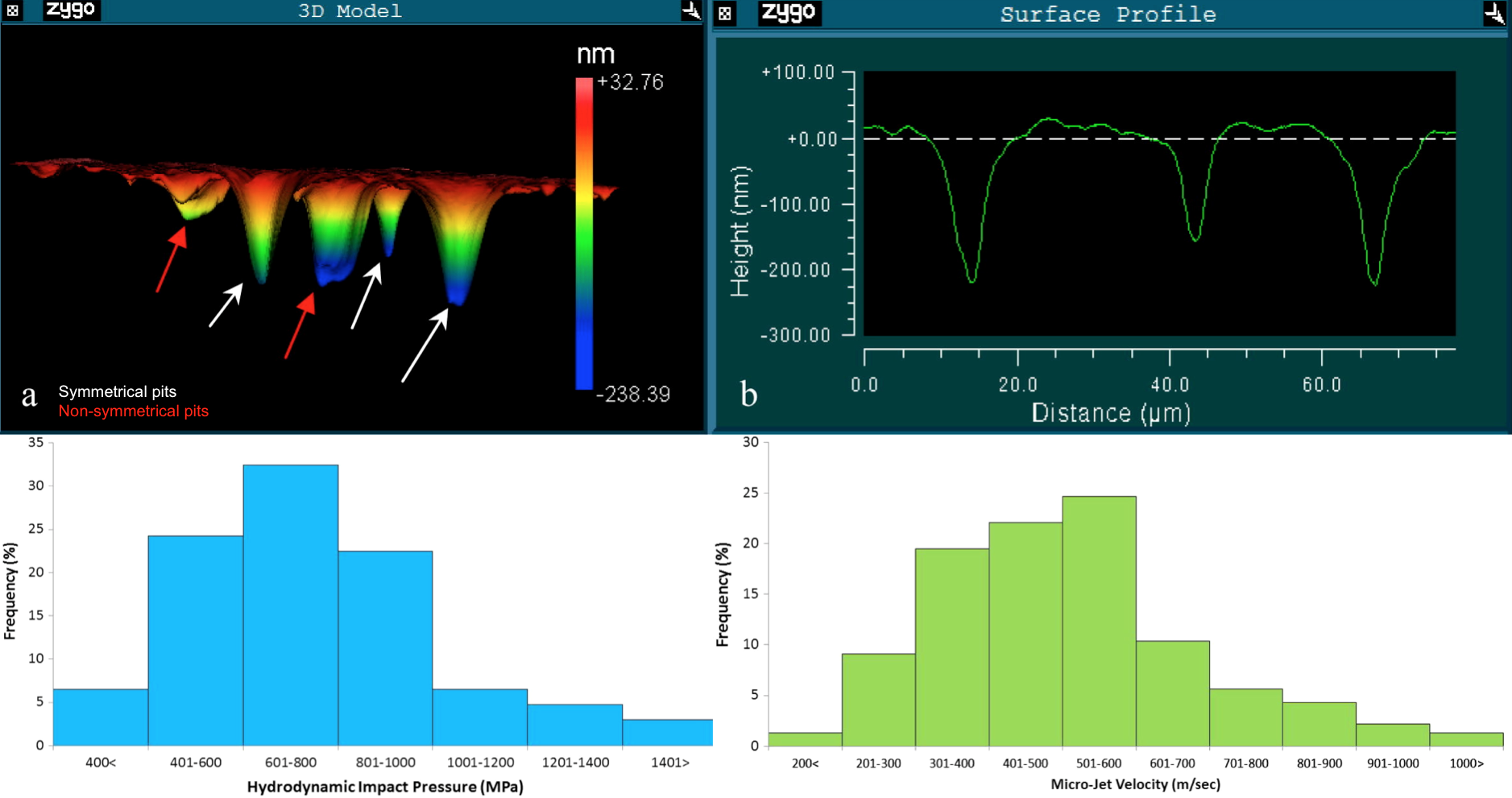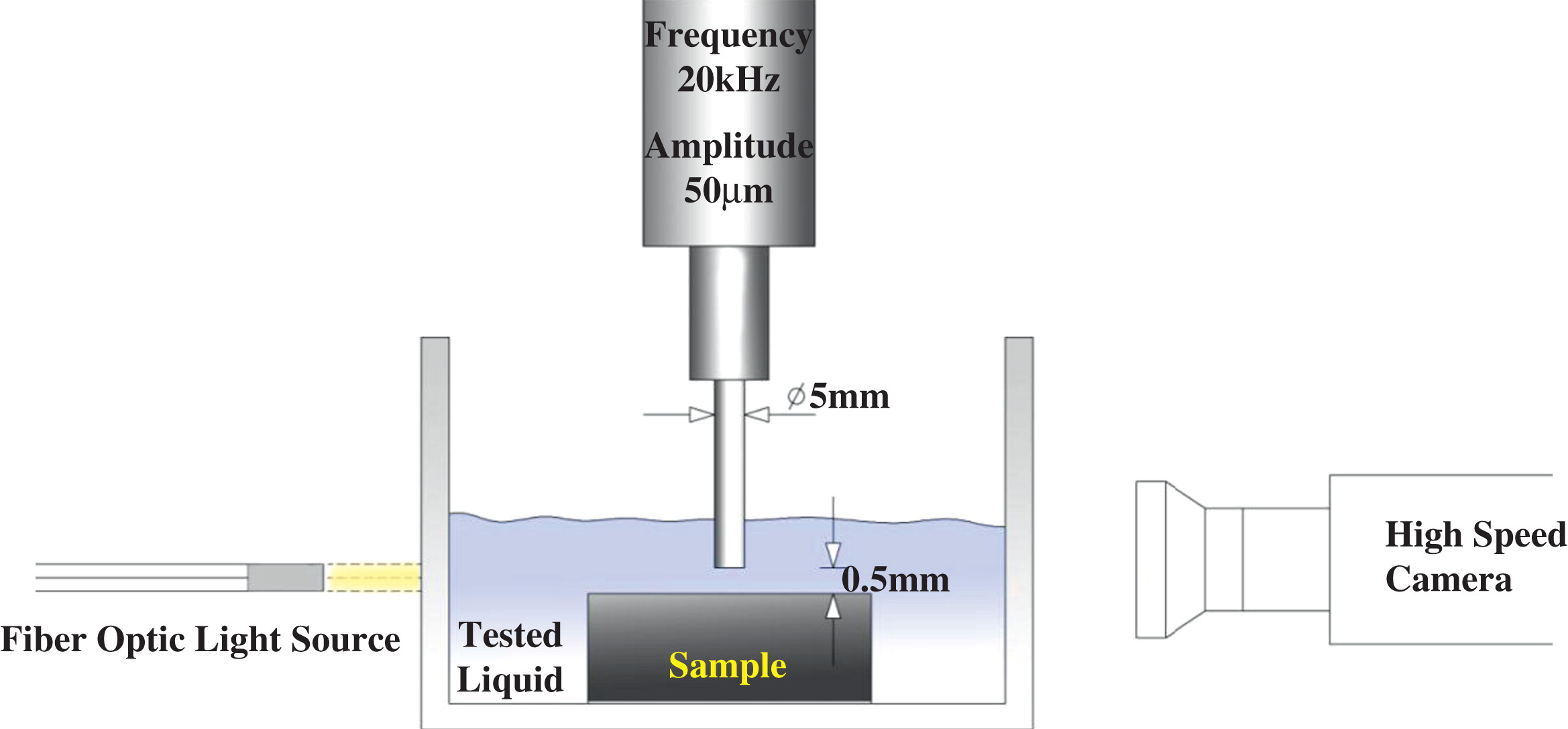High-speed liquid jets

High-speed liquid jets are generated from the implosion of cavitation bubbles near a boundary wall.
We have shown using a reverse engineering approach based upon multiple cavitation pits analysis that in a 20 kHz sonicated liquid, high speed liquid jets in the range of 200–700 m/s can deform a steel metallic surface with exerted hydrodynamic impact pressures up to 1 GPa.

